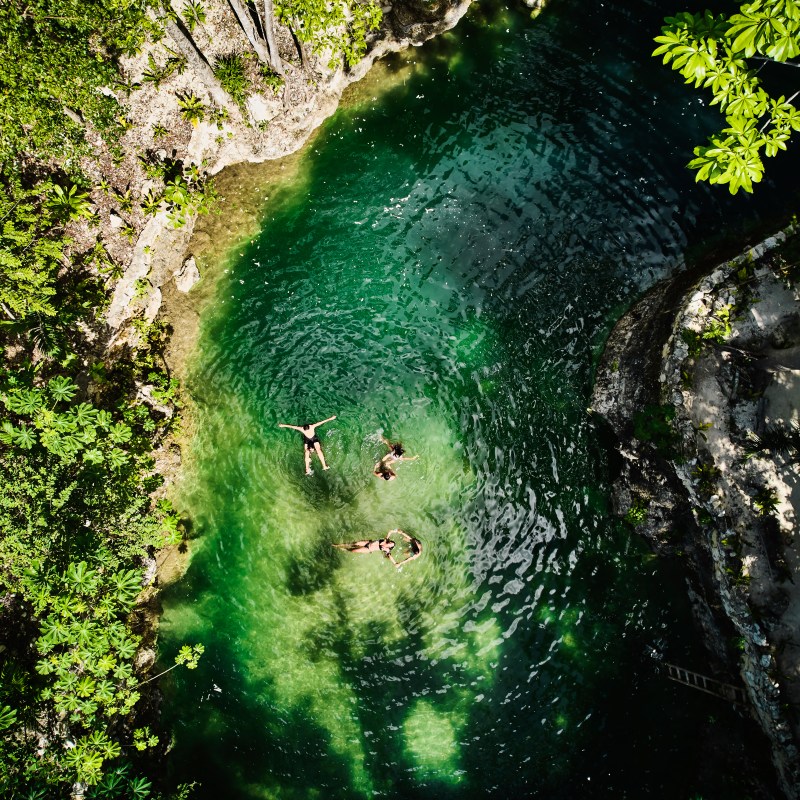
If you’ve ever visited the Riviera Maya (or did a little research into a potential trip), you probably know a thing or two about cenotes.
Videos by TravelAwaits
These stunning and pristine freshwater pools are often featured in marketing materials for hotels, resorts, rentals, adventure tours, and more. They’re iconic thanks to their location, often in underground caves and sometimes surrounded by lush, impenetrable jungle.
If you’ve had the great fortune of swimming in one of these refreshing watering holes, you likely heard a few facts about the origins of cenotes, ancient beliefs surrounding them, and modern efforts to preserve them.
But how much do you really know about these tropical sinkholes? Let’s nerd out with these crazy facts about cenotes.
9 facts about cenotes
They date back to the asteroid that killed the dinosaurs
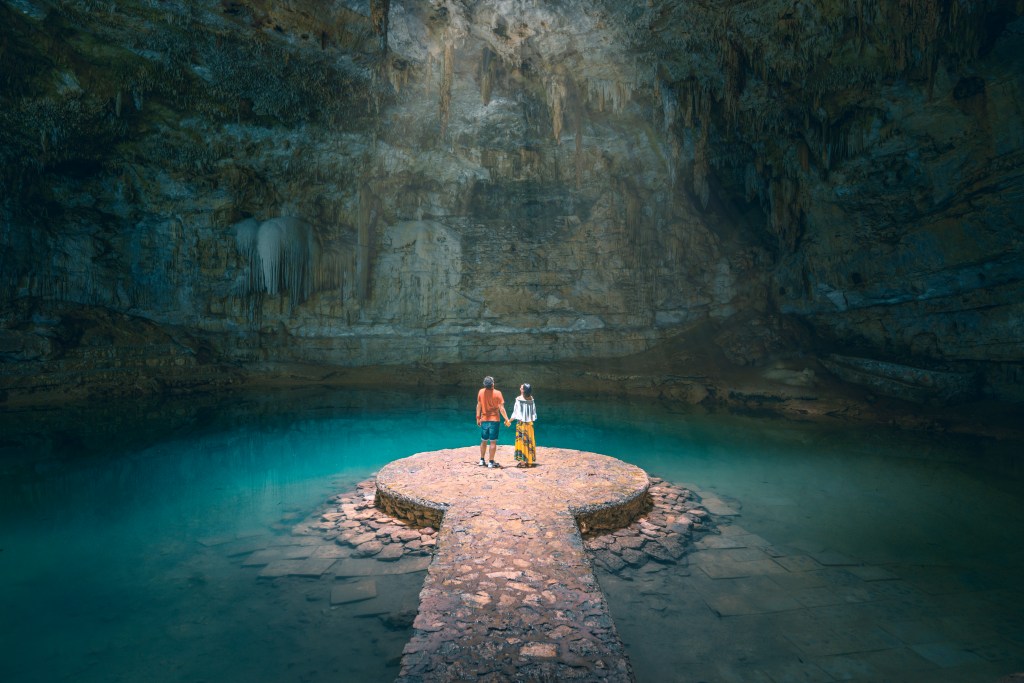
If you look at the Gulf of Mexico, you might notice that it has a round shape, traced by the coastline of Yucatan, Mexico, to the south, all the way to Florida in the northeast. That round shape is the impact zone (called the Chicxulub Crater) of a massive asteroid that struck the Earth around 66 million years ago.
That’s the same asteroid that kicked off a bunch of natural disasters that took out almost all the dinosaurs and plant life on the planet. (Crocodiles survived, along with jellyfish, magnolia trees, and a few other hardy little beasts.)
The meteor strike also affected the limestone bedrock around the region; to simplify greatly, the impact created underground caves from the limestone where freshwater began filtering in.
There are over 6,000 cenotes in Yucatan
The main impact zone of the meteor that struck around 66 million years ago frames the city of Merida, the capital of Mexico’s Yucatan state. (Yucatan is both a state and a peninsula.) Today, there are an estimated 6,000-7,000 cenotes around Mexico, with around 900 focused around Merida and its ‘ring of cenotes’.
As of 2025, over 2,000 cenotes have been officially registered in Mexico, but new ones are constantly being discovered. Additionally, cenotes evolve over time; the limestone that composes most of the caves is sedimentary and easily erodes. Slowly, over time, cenotes grow.
They come in all shapes and sizes

During a recent trip to Sandos Caracol Eco Resort, I had the chance to swim in the resort’s large, main cenote. It’s a mature cenote where guests can swim—but there’s another smaller cenote called the Rio Jade. This is a very narrow cenote that almost looks like a creek.
In reality, it’s a very deep channel that’s framed by limestone and home to dozens of healthy mangrove trees. Their roots help purify the water. But what makes the Rio Jade an actual cenote is the fact that it’s connected to the other bodies of water through underground channels.
All cenotes are linked underground—and to the ocean
That leads me to my next point: cenotes don’t exist alone. What makes them unique and unmatched in terms of geological formations is that the freshwater in them is porous. In other words, the water that you see in one cenote today might not be there tomorrow, traveling between underground limestone caverns and even through mangrove root systems.
That leads me to my next point: there aren’t cenotes without both limestone and mangroves.
Limestone keeps them cool
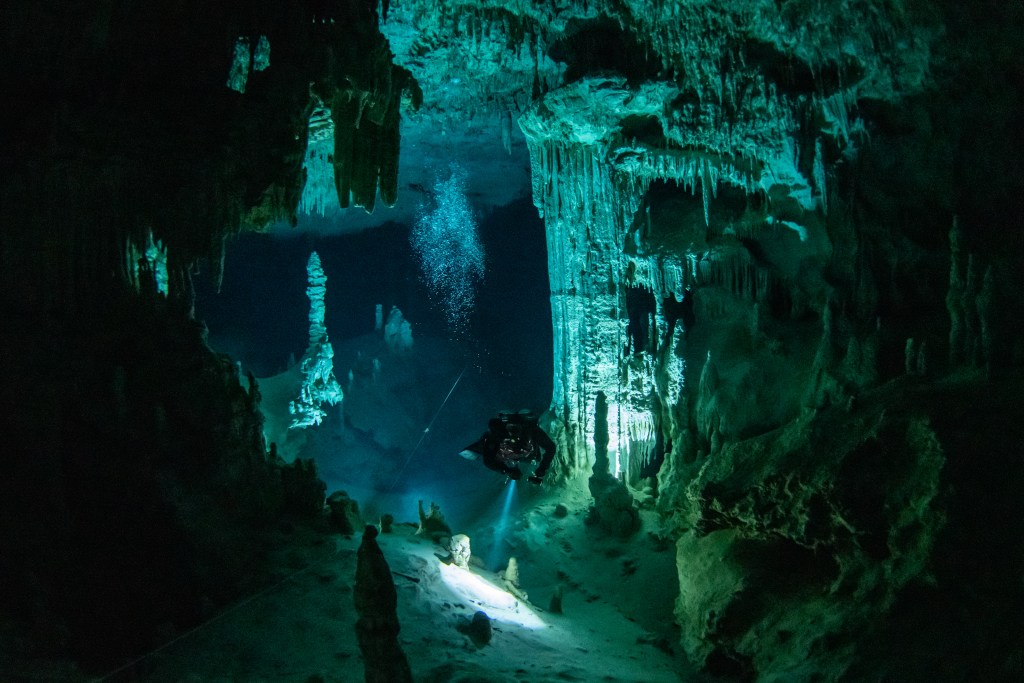
As mentioned above, cenotes were formed when an asteroid struck the planet, causing an impact that affected the limestone bedrock around modern-day Yucatan. Limestone is more ‘fragile’ than other types of rocks, meaning it will erode over time, expanding the channels between cenotes and the size of larger sinkholes.
Limestone also has cooling properties. If you ever swam in a cenote, you might have been surprised by how cool the water is. That’s partly thanks to the limestone; when rainwater filters into a cenote, the limestone’s insulating qualities maintain its cool temperature.
Mangroves keep them clean
Not all cenotes have mangroves inside them—but all cenotes benefit from the purifying mangrove roots. As already mentioned, cenotes are interconnected through underground channels and are refilled by rainwater. Rainwater seeps into the land and is purified by mangrove roots (and other plants) before eventually draining into cenotes.
Ever wondered why you need to shower to wash off sunblock and lotions before swimming in cenotes? Because you’re not just swimming in that cenote. You’re swimming in purified rainwater that will be transferred to other cenotes and even into the groundwater the jungle relies on to grow.
Cenotes are the main source of freshwater in Yucatan
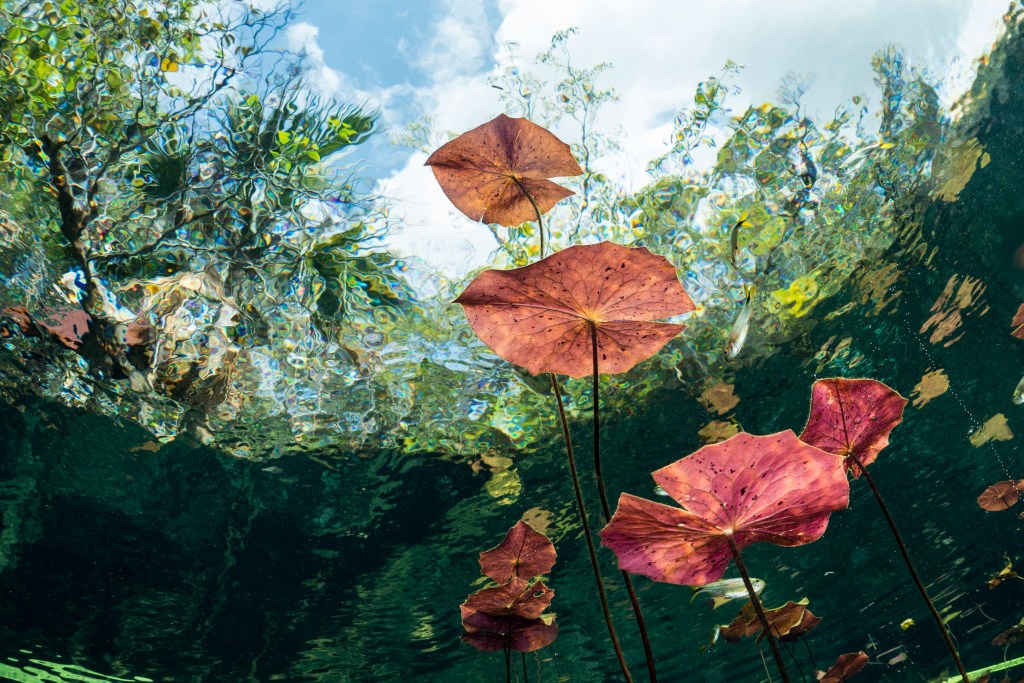
Before I dive into the cultural and historical implications of cenotes, I also want to point out that they’re incredibly important to Yucatan because the region doesn’t have any lakes or large rivers. That makes cenotes the most important source of groundwater—one that ancient peoples would have relied on for sustenance and farming.
Ancient Mayans saw cenotes as portals to the Underworld
It’s not hard to see why Ancient Mayans would have seen cenotes as powerful—just look at a photo of Cenote Sagrada or another large site. They’re incredibly moving to behold, even if you’re not normally swayed by nature.
But let’s not forget: to ancient peoples, they were also invaluable sources of freshwater, as pointed out in the last section. Ancient Mayans viewed cenotes as portals to the underworld, aka Xibalba.
That made cenotes important places for rituals, especially those related to the God of Rain, Thunder, and Lightning, Chaac. At the time, the Mayans didn’t know about the intricacies of the monsoon versus dry seasons, meaning many cenotes became important spiritual hubs where the people could interact with powerful gods and make appeals.
Chichen Itza, for example, is speculated to have been built close to major cenotes, and was likely involved in rituals that focused on nearby sinkholes.
Ancient Mayans made sacrifices into the cenotes
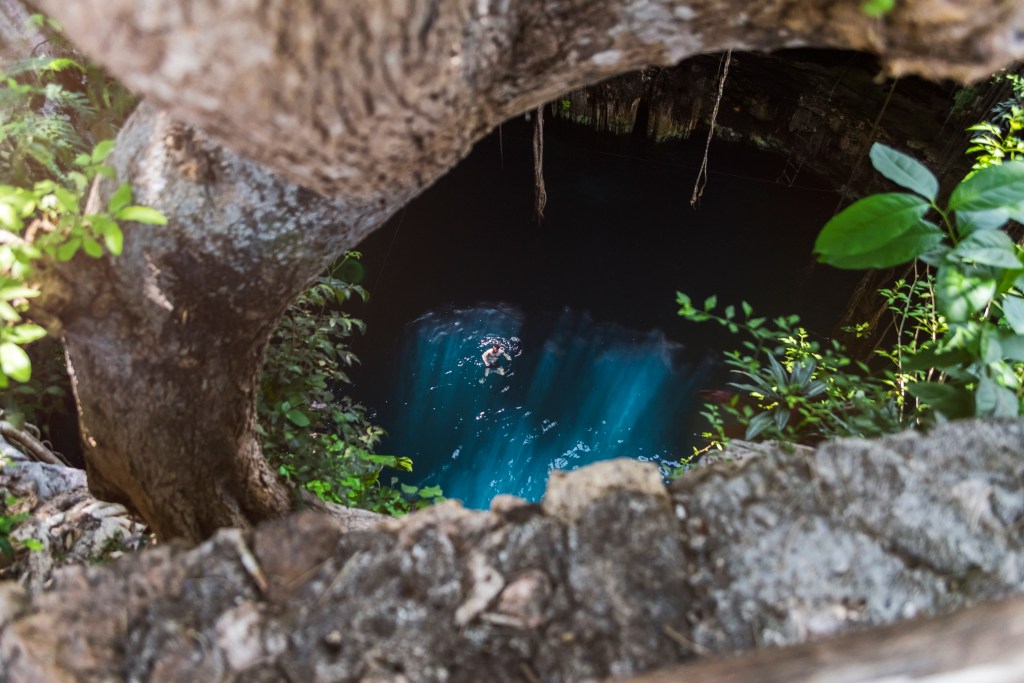
Speaking of making appeals, archaeologists have found evidence of jewelry and even human remains in some cenotes. It’s believed that sacrifices to the gods would have been made in cenotes in order to honor the gods and call forth things like rain.
But don’t think of it as all doom and gloom. Like other facts about cenotes, there’s a lot of layered information, even when it comes to their historical spiritual impact.
As one of my guides on a cenote tour at Sandos Caracol Eco Resort, Ancient Mayans might not have been upset by being offered up as a sacrifice in a cenote. Only powerful, wise, or otherwise impressive Mayans would have been selected, making it an honor.
